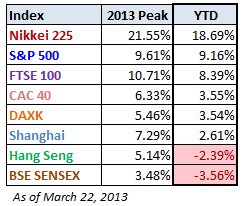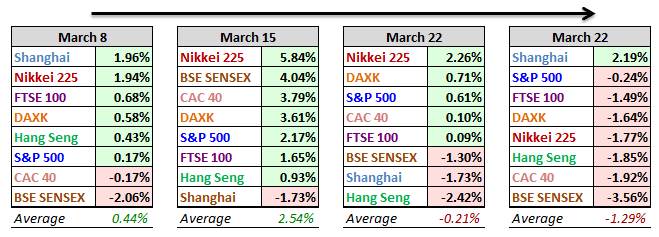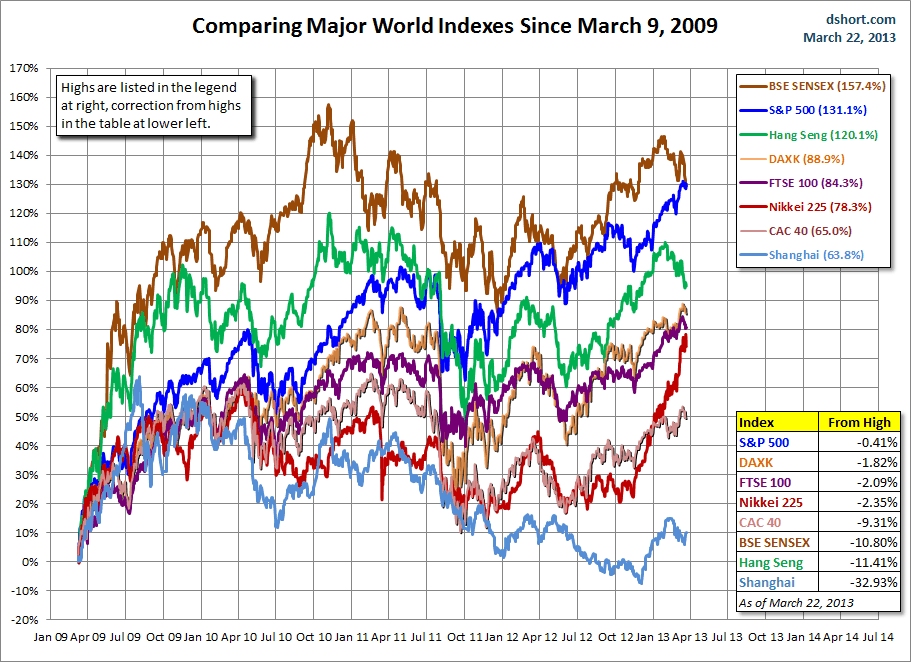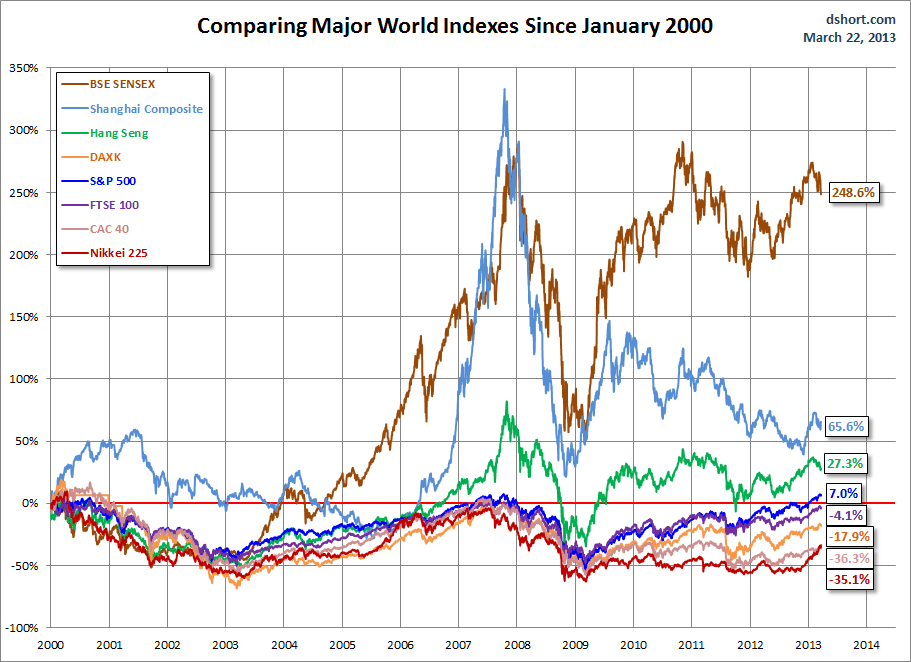Of eight indexes on my world watch, China's Shanghai Composite was the
only one finishing the week with a gain, up a handsome 2.19%. All the
others lost ground. The US's S&P 500 slipped slightly, down 0.24%.
The other losers ranged from -1.49% for the UK's FTSE 100 to -3.56% for
India's SENSEX. It's impossible to determine how much of the week's
losses were attributable to the Cyprus Effect, but the three eurozone
indexes, FTSE, DAXK and CAC 40 posted losses ranging from about 1.5% to
1.9%.
The Shanghai remains the only index on the watch list in
bear territory -- the traditional designation for a 20% decline from an
interim high. See the table inset (lower right) in the chart below.
The index is down 32.93% from its interim high of August 2009. At the
other end of the inset, the S&P 500 is the closest to its interim
high from the previous week. The Nikkei, in fourth place, would have had
the top spot, a new interim high, had it not been for its Friday
selloff.

Here is a table highlighting the 2013 year-to-date gains, sorted in that order, along with the 2013 interim highs for the eight indexes. The sustained advance of the Japan's Nikkei puts it solidly in the top spot, more than double the gain of the second place S&P 500. Two three of the Asia-Pacific indexes, Hong Kong's Hang Seng and India's SENSEX, have YTD losses, and third, China's Shanghai, has the smallest YTD gain.
A Closer Look at the Last Four Weeks
The tables below provide a concise overview of performance comparisons over the past four weeks for these eight major indexes. I've also included the average for each week so that we can evaluate the performance of a specific index relative to the overall mean and better understand weekly volatility. The colors for each index name help us visualize the comparative performance over time.
The chart below illustrates the comparative performance of World Markets since March 9, 2009. The start date is arbitrary: The S&P 500, CAC 40 and BSE SENSEX hit their lows on March 9th, the Nikkei 225 on March 10th, the DAX on March 6th, the FTSE on March 3rd, the Shanghai Composite on November 4, 2008, and the Hang Seng even earlier on October 27, 2008. However, by aligning on the same day and measuring the percent change, we get a better sense of the relative performance than if we align the lows.
A Longer Look Back
Here is the same chart starting from the turn of 21st century. The relative over-performance of the emerging markets (Shanghai, Mumbai SENSEX, Hang Seng) is readily apparent, especially the SENSEX, but the trend over the past two years has not been their friend (make that three years for the Shanghai).
Check back next week for a new update.
score : http://www.investing.com/analysis/world-markets-weekend-review:-a-general-selloff,-except-for-china-160158














0 comments:
Post a Comment